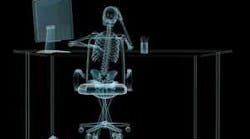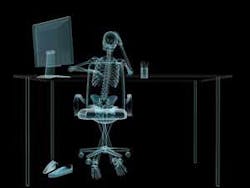by Cynthia Brattesani, DDS
Dental digital radiography has progressed in the more than five years I’ve used the technology. More dentists are adopting it, and the technology itself has improved significantly.
Let’s take a look back: Digital radiography has been revolutionizing dentistry gradually since its introduction more than 10 years ago by dramatically improving our diagnostic capabilities and communication with patients. Digital radiographic images appear on high-resolution computer monitors immediately as they are captured, and numerous image-enhancement tools enable us to see aspects of X-rays that were never before possible.
The benefits of digital radiography also include no waiting to develop film before making a diagnosis. In addition, we can tear down our darkrooms and get rid of hazardous chemicals and the ongoing need to dispose of them. Going digital also means financial savings in the elimination of consumable supplies such as film, chemicals, and mounts - the cost of which could never be recovered.
New tools mean even more effective diagnostic capabilities. Using software updates I’ve received from my digital company since I became an owner, I may pick from no fewer than 10 image enhancements, including my favorite, ClearVu™. And with some digital X-ray systems, you can even draw, place alerts, and add text on images to explain problems to patients or communicate with other dentists.
Effective communication with patients is the core of my dental practice, and the most supportive tool I have is my digital radiography system. Thanks to digital X-ray, my patients are directly involved in the diagnostic process.
When patients see detailed, potential problematic conditions and their solutions on a full-screen X-ray image, they don’t simply take my word for it. I show patients potential problems instead of telling them that problems exist. As a result, patients more readily accept my treatment recommendations.
Time is precious in our dental practice, and improvements in my digital radiography system have positively impacted everyone on our team. Newer features and specialized modules enhance work flow and create more efficient record keeping and communication, especially when electronic file sharing of X-rays and photographs is involved.
One specialized module enables us to compose full-page reports, including images, and e-mail them to colleagues, often in less than a minute. And because the best digital-radiography software allows for storage of radiographs, intraoral and extraoral photographs, and scanned images and X-rays from other doctors, I can easily put together presentations for patients and communicate with professionals. My team no longer needs to hunt for the right X-ray. With our system, we have every image of every patient right on the computer. Even an inexperienced person can master it quickly.
Instead of searching through file folders to find film X-rays, duplicating them, and mailing them, we find images and electronically transmit them to other offices with a few mouse clicks. We also e-mail complete FMX series as single images, and the recipients can download them as single images instead of as 18 images.
Many systems offer multiple-image formats, which make it easy for dentists to share digital radiographic and camera images - even if they use different systems. And with some programs, it’s easier than ever to send images digitally to the more than 150 insurance companies that accept them.
The increasing number of dentists and insurance providers that process images this way makes the process virtually seamless. Because of technological improvements during the past several years, the streamlined communications flow has become so effective that I can’t imagine working without digital radiography.
Some digital radiography companies are listening to dentists and incorporating into their products the features that clinicians find useful. This has enhanced diagnostics and communications and fostered greater integration of digital radiography software with practice-management programs, digital panoramic systems, scanners, and all types of cameras. Dentists now better understand and experience the advantages of the imaging-hub concept: a single place for all images.
As a woman who is constantly seeking to balance work and family, I appreciate that recent enhancements to digital radiography technology have given a tremendous organizational boost to my practice. From greater efficiency and improved work flow to the integration that enables all of my practice’s images to be stored in a single location, I’m better organized than I’ve ever been.
I’m also finding that I’m not alone in discovering these benefits. More dental schools, hygiene programs, and dental assisting programs are incorporating digital technology into their facilities and curriculums. My digital radiography company places its systems in medical examiner facilities, military bases, and even in the field with combat units in Iraq.
This expansion is important because it means digital radiography is here to stay. It is the new standard of care. Adding to its validation, professional associations and researchers continually endorse digital technology.
Finally, as our confidence in and comfort with digital grows, the dental digital family is growing, too. As I see it, this will result in more creative ways to use the technology for the greater benefit of dentists and their patients.







